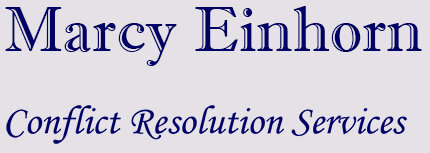Presumptive Mediation Takes Hold in New York[1]
by Marcy Einhorn, Esq.
Click here to download a pdf version of this article:
I recently joined the roster of mediators for several courts in New York State and started providing pro bono mediation services as a Court-appointed mediator in assigned cases in a variety of matters. This opportunity to serve as a mediator is a direct result of Chief Judge Janet DiFiore’s Alternative Dispute Resolution initiative which launched in 2019 and continues to the present day.
In her 2021 annual State of Our Judiciary address in March of this year the Chief Judge stated that the Courts “remain 100% committed” to presumptive early ADR and the new culture of “mediate first” in all appropriate cases.” Judge DiFiore noted in her address that the “continued expansion of ADR has been one of the bright spots” in the efforts to keep the courts functioning during the pandemic.
To further this shift in the court’s culture the Court program includes a variety of modes to help resolve cases including reliance on arbitrators and neutral evaluators in addition to the mediation rosters. With respect to mediation alone there are now over 50 courts throughout the state that maintain rosters of trained mediators to handle disputes in cases involving commercial litigation, divorce, custody and visitation, personal injury and probate and over 900 mediators on state trial court rosters.
Eligibility to serve on these rosters is governed by Part 146 of the Rules of the Chief Administrative Judge, which outlines the minimum training and experience required to be on a court roster. Qualified applicants of all backgrounds and experiences are encouraged to apply for admission to the rosters to assure that the program reflects the diverse populations that the courts serve. Individuals may complete an online application to mediate for one of the trial courts.
The program has been “wildly successful” in the year and a half since it was launched, according to Lisa Denig, Esq. Special Counsel for ADR Initiatives in the Office of Deputy Chief Administrative Judge George Silver, even meeting with increased enthusiasm during the pandemic since it provides people with access to a forum for resolving their disputes despite the shutdown. “People appear to be more willing to try new things right now,” said Ms. Denig. All roster programs have the same basic setup, Ms. Denig explained, with differences from one court to the next depending on the needs of the jurisdiction and the particular Administrative Judge’s implementing rules.
Information about each court’s program and about the statewide initiative is available on court websites, reports Lisa Courtney, Esq. the Court’s Statewide ADR Coordinator. Revisions have been made to all local court web sites for the courts outside of New York City to include information about program rules and information about accessing free and reduced-fee mediation. Each of the Judicial Districts’ websites also have links for information about ADR programming. To promote ease of access to these programs each Judicial District has a designated ADR coordinator so that any court user or prospective court user with questions about referrals to ADR or how to get on a local trial court roster has a point person to get in touch with. And select NYC court websites and the statewide ADR web pages also include helpful information about how to find free and reduced-fee mediation as well as information about what questions to ask when choosing a mediator, approved training programs, and what to look for in mentorship/apprenticeship programs.
In addition, numerous resources have been developed by the Statewide ADR Advisory Committee and the Statewide ADR Office to address best practices for court staff serving as neutrals and for recruiting diverse neutrals to the court rosters, along with guidelines for continuing education and standards of conduct for mediators.
The biggest problem the program currently faces arises out of its success: the staffing of technical and support positions has not kept up with the rapid acceptance and growth of the program.
The professionalism of the mediators in these programs is off the charts,” according to Ms. Denig. She noted how proud she is of these programs, sharing that she finds this is a great professional community to be in. The mediators’ willingness to take cases and work as hard as they can, to offer extra free time above and beyond their commitments, to mentor co-mediators and take on interns has all been incredibly inspiring.
While mediation will continue virtually for the foreseeable future and the mediators will continue to serve pro bono at least for each initial session, Lisa Denig foresees a time when the program is so widely accepted that the mediators will be paid for their service.
As a former Court employee, it has been particularly satisfying to take everything I learned in a Supreme Court Law Department and, with innumerable hours of mediation training, use those skills and experiences in a forum that empowers the parties to craft their own solutions to their conflicts. Based on the successful launch of the program and the Court’s continuing commitment I have no doubt that it will to continue to expand and will become the dispute resolution procedure of choice at all levels of the legal system in New York.
[1] Originally published in the NYWBA Newsletter ©2021. Edited for clarity.
